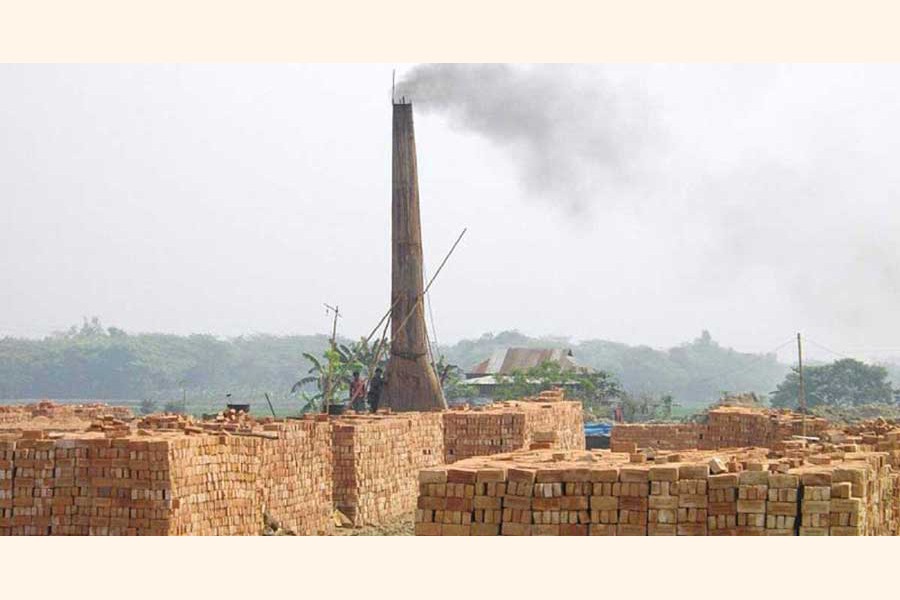BOGURA, Jan 08 (UNB): Dozens of illegal brick kilns, set up on arable land near schools and colleges, have formed a powerful clique who are removing the fertile topsoil for making bricks, rendering the fields unusable for agriculture.
Sources alleged, fields that used to be covered by crops are now dotted with brick kilns operating right under the nose of the local administration.
Locals said they had filed complaints with the administration but there has been no change.
They said nobody dares to speak against the practice of cutting topsoil as the brick kiln owners are working 'in collusion with a local syndicate.'
"No-one dares protest against the removal of topsoil," a local man said, declining to be named.
Bangladesh, the fourth largest brick producer in the world, has a voracious appetite for the construction material.
In a 2017 report of the Department of Environment said there are more than 7,000 brick kilns in Bangladesh that produce about 23 billion bricks annually.
The $2.53 billion industry accounts for approximately 1.0 percent of the GDP and generates employment for more than a million people. It consumes 3.350 billion cubic feet of clay and uses 5.68 million tonnes of coal every year. The sector is responsible for emitting 15.67 million tons of CO2.
Abu Bakr, secretary general of the Bangladesh Brick Manufacturing Owners Association, told the news agency that the industry is growing about 10 per cent every year.
Shajahanpur Statistics Office sources said more than a hundred brick kilns were established in the upazila which has 16,180 hectares of arable land.
In Madla, Khottapara, Majhira unions of the upazila, this correspondent saw dozens of trucks being loaded with topsoil from arable lands and taken to brick kilns.
Excessive removal of topsoil has turned parts of Jalshuka and Chandai areas in Khottapara union into wetland.
Farmers stare at bleak future with huge pits dotting arable lands in Madla, Malipara, Sajapur, Belpukur, Dumunpukur, Chakjora, Khalishakandi, Dublagari, Durulia, Ghasira, Partekhur, Fatki, Jamunna and Darigachha areas in Shajahanpur upazila.
Upazila Agriculture Officer Noor-e-Alam said land grabbers are only thinking about making profits. "The most helpful ingredients are contained in 4 to 6 inches below the surface area. It takes lands 15 to 20 years to get back their lost nutrition if they lose topsoil," he said.
Farmers are producing brinjal, chili, potato, and other crops in the fertile land of the upazila, Alam said, adding that illegal soil cutting is threatening crop production.


